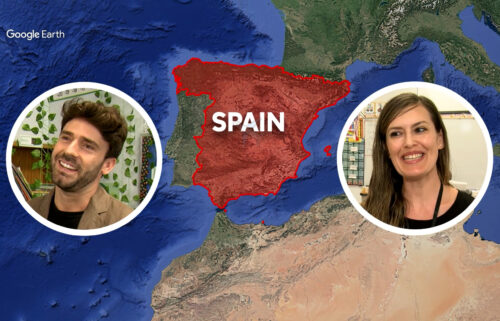Soaring temperatures to record rainfall: Asia reels as climate crisis takes hold
By Heather Chen, CNN
Hong Kong (CNN) — The world’s largest and most populous continent is reckoning with the deadly effects of extreme summer weather, as countries endure blistering heatwaves and record monsoon rainfall, with governments warning residents to prepare for more to come.
This month torrential rains inundated parts of Japan, China, South Korea and India, upending the lives of millions and causing flash floods, landslides and power cuts. Record temperatures also led to a rise in heat-related illnesses, particularly among vulnerable communities such as the elderly.
On Saturday, at least 13 people in the central South Korean city of Cheongju died after waters from a burst riverbank flooded an underpass, trapping vehicles, including a public bus.
At least 41 people have died in South Korea in recent days and thousands more have been forced to evacuate their homes and seek temporary shelter, as heavy downpours hit central and southern parts of the country.
In response to the loss of life, South Korean President Yoon Suk Yeol called for an overhaul of the country’s approach to extreme weather.
“This kind of extreme weather event will become commonplace — we must accept climate change is happening, and deal with it,” Yoon said Monday.
In neighboring Japan, record rainfall in the southwest of the country resulted in devastating flooding that left at least six people dead, and many others still missing.
“It’s raining like never before,” a spokesman for Japan’s Meteorological Agency said in a statement that called for maximum vigilance from residents in affected areas.
It is a pattern seen throughout the region — from parts of the Philippines and Cambodia in the south where widespread flooding has led to transport disruptions in major cities including the capitals Manila and Phnom Penh — to parts of India further north where record rainfall brought several states to a near standstill and claimed the lives of dozens, according to officials.
The capital Delhi on July 10 marked its wettest July day in more than 40 years, according to authorities. The heavy downpours forced school closures and left many vulnerable without shelter.
One extreme to another
While some regions are grappling with deadly downpours, others are facing searing heat.
On Monday, a weather station in northeastern China recorded a record high temperature of 52.2 degrees Celsius (125 Fahrenheit), while Japan saw temperatures rise to 39.7 degrees Celsius (103 Fahrenheit).
In total, more than five weather stations in China exceeded highs of 50 degrees Celsius (122 Fahrenheit) Monday — among the hottest in history. This follows a record hot summer in the capital Beijing which saw temperatures in early July soar past 40 degrees Celsius (104 Fahrenheit) — prompting officials to issue heat red alerts for two weeks as the global climate crisis intensifies.
The heatwave hits amid the arrival of US Climate Envoy John Kerry in China on Sunday for talks between Beijing and Washington to resume cooperation on climate discussions.
China, one of the world’s biggest polluters, has been seeing its share of extreme weather events — with torrential downpours and flooding battering other parts of the country particularly in the south.
Heatwaves have also struck parts of Japan. Temperatures as of Monday morning rose to highs of 39.7 degrees Celsius (103 Fahrenheit) in the city of Kiryu, located in Gunma Prefecture on Honshu island — Japan’s largest and most populous which also houses Kyoto and Tokyo, and 39.6 degrees Celsius in Hatoyama a town located in Saitama Prefecture.
Cases of heat stroke have become increasingly common among Japan’s elderly, who account for 28% of the population.
Temperatures in the capital Tokyo have soared to dangerous levels in recent years, leaving government officials to call for electricity rationing as the country struggles with growing power shortages.
A vulnerable region
Scientists have warned the frequency and intensity of extreme weather events will continue to increase as the human-caused climate crisis accelerates.
In its annual climate update, the World Meteorological Organization said the world is on track to breach a critical climate threshold in the next five years as global temperatures continue to climb above pre-industrial levels.
Asia, with an estimated total population of 4.4 billion people, is acutely vulnerable to the impacts of climate change, with recent bouts of extreme weather resulting in water shortages, crop failures and a slow down in the economy.
That vulnerability was thrown into sharp focus last year when catastrophic flooding hit Pakistan killing more than 1,700 people and leaving millions homeless.
The South Asian country is now dealing with its worst economic crisis in decades, worsened by inflation spiking because of the floods ruining last year’s harvests.
“One thing is very clear: what happened in Pakistan will not stay in Pakistan,” Prime Minister Shehbaz Sharif told world leaders at the United Nations General Assembly in September last year, warning that climate change would not spare countries.
“The entire definition of national security has changed today. And unless the leaders of the world come together to act and act now on an agreed common agenda, there will be no earth to fight wars over. Nature will be fighting back. And for that, humanity is no match at all.”
Neighboring India, the world’s most populous nation, is among the countries expected to be worst affected by the climate crisis, according to the Intergovernmental Panel on Climate Change (IPCC), potentially affecting 1.4 billion people nationwide.
After suffering recent blistering heat waves in the north and east, thousands were then forced to flee severe flooding in states like Himachal Pradesh last week after heavy rains battered villages and turned roads into rivers.
Every year, India is hit by severe flooding and landslides during the monsoon season, which drenches the country from June to September.
Assam, a state with a population of more than 31 million people, is among the worst hit.
More than 495,000 people spread across 22 districts were impacted by floodwaters and about 14,000 evacuated to relief camps when rain swept across the region. Disaster management officials and state authorities in late June reported at least 10 deaths since the rains began.
Video broadcast on local television showed villagers wading neck-deep through the muddy water with their cattle, and homes, shops and cars submerged in the floods.
Red alerts, indicating the highest threat level, were issued for several northern states including Himachal Pradesh, Uttarakhand, Punjab and Haryana. Landslide warnings were also issued for Uttarakhand and Himachal Pradesh.
The heavy downpours also forced school closures in a number of areas including Uttar Pradesh and the capital New Delhi.
The impact of such weather extremes is hard to miss and India’s poor are among the most vulnerable.
Floods have posed a particular danger to the 35% of the population — roughly 472 million people — who live in urban slums, according to the World Bank.
“The irony of it is that the poor of the world are actually victims of climate change,” even if they aren’t the ones who “created the problem,” Sunita Narain, director general of the Centre for Science and Environment and veteran Indian environmentalist told CNN last year.
“Floods, droughts and other devastating climate events are “all showing us very clearly what will the future be,” she added.
The-CNN-Wire
™ & © 2023 Cable News Network, Inc., a Warner Bros. Discovery Company. All rights reserved.




